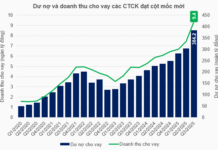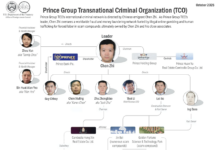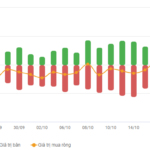Exactly one year ago, on March 6, 2023, Vingroup’s Chairman of the Board of Directors, Pham Nhat Vuong, announced the establishment of Green and Smart Mobility (GSM) – the world’s first green and smart mobility platform providing eco-friendly transportation and multi-platform taxi services. GSM operates in two main areas: car and electric scooter rentals, as well as its own electric taxi service. The initial charter capital of GSM is VND 3 trillion (equivalent to USD 129.15 million), with all shares held by the richest billionaire in Vietnam, through VIC stock.
In the past year, despite being a latecomer to the market, this electric taxi firm has still left its mark. In particular, it adopted a new business model similar to Grab, which was announced on exactly the same day, March 6.
Impressive numbers
Regarding the remarkable changes at GSM, the first thing to note is the dramatic increase in the company’s charter capital in just one year. Specifically, according to the business registration announcement on January 24, 2024, GSM currently has a charter capital of VND 9.666 trillion (equivalent to USD 416.89 million), which is 3.2 times higher than at the time of establishment. Currently, Mr. Nguyen Van Thanh is the CEO of this company.

Mr. Nguyen Van Thanh, CEO of GSM
With an impressive charter capital and support from the richest person in Vietnam, GSM has quickly expanded its presence nationwide. Currently, this electric taxi service is available in 29 provinces and cities, serving over 40 million passengers in Vietnam and contributing to over 200 million kilometers of green travel, reducing 44,000 tons of CO2 emissions (equivalent to more than 2 million newly planted trees). In addition to operating directly under the Xanh SM brand, GSM also cooperates with transportation companies to provide eco-friendly travel services to the public.
GSM not only aims to gain market share in Vietnam but also expand to Southeast Asia and the world. On November 9, 2023, it expanded to its first foreign market, Laos, and received enthusiastic support from users. GSM’s electric taxi service will operate in the capital city of Vientiane and other provinces and cities such as Luang Prabang, Savannakhet, Champasak, and more, in the next phases.
According to the plan, Indonesia and the Philippines will be the next markets in GSM’s strategy to expand to 9 international markets by 2025. In Indonesia, GSM even sets a target to invest USD 900 million in the country.
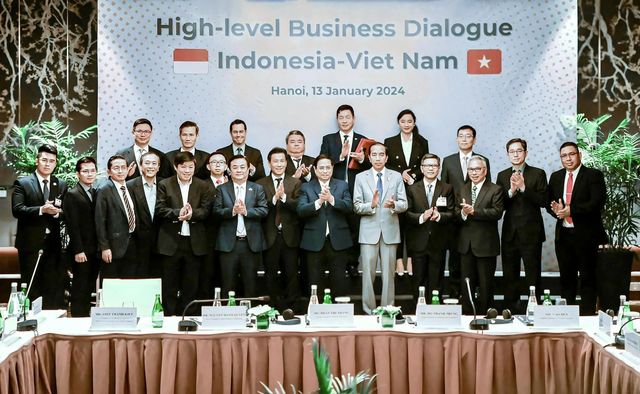
Leaders of VinFast and GSM meeting with Prime Minister Pham Minh Chinh and the President of Indonesia
Competition with traditional taxi and ride-hailing companies
When billionaire Pham Nhat Vuong launched GSM, many people doubted the feasibility of this business model given the presence of many major players in the Vietnamese market. In the traditional taxi market, brands like Mai Linh, Vinasun, and G7 are already well-known. In the ride-hailing segment, Grab, Gojek, and Be are the majority players. In particular, Grab’s rapid growth has even forced a giant like Uber to withdraw from the Southeast Asian market.
However, with his ambition, the Chairman of Vingroup has declared war not only on traditional taxi companies but also on ride-hailing companies. Firstly, GSM operates as a traditional taxi company but with advanced technology. It has built a large fleet of vehicles, including both cars and electric scooters. One advantage of Xanh SM compared to traditional taxis is that it also introduces a ride-hailing app – similar to ride-hailing companies – but also offers additional services such as motorbike delivery.
In the battle against ride-hailing companies such as Grab, Gojek, and Be, GSM competes fairly by offering similar services like car and motorbike hailing and delivery. However, GSM’s advantage over these competitors is having a fixed fleet to provide consistent service, regardless of price fluctuations.
Furthermore, Mr. Nguyen Van Thanh, CEO of GSM, also mentioned that it surpassed many traditional taxi companies. As of the end of 2023, GSM has a workforce of 30,000 people, including over 14,000 taxi drivers. It is expected that the fleet will reach 30,000 electric cars and 60,000 electric scooters in the coming months.
GSM’s number of vehicles and drivers is now equivalent to or even higher than that of well-established taxi companies. For example, Mai Linh, one of the largest taxi companies in Vietnam, owned a fleet of over 13,000 vehicles and employed nearly 17,000 people by the end of 2022, including almost 15,000 taxi drivers.

GSM’s team of drivers
GSM not only has a fixed fleet of vehicles but also recently launched the Xanh SM Platform. With this platform, VinFast electric vehicle owners nationwide can register to become business partners of Xanh SM, including in areas where the company does not have a direct presence.
In addition to having immediate access to GSM’s millions of customers, VinFast owners also enjoy a superior revenue-sharing mechanism. Specifically, by joining the Xanh SM Platform in 2024, partners will receive the best revenue-sharing rate on the market, up to 80%.
This business model is similar to what Grab, Gojek, and Be have offered. However, it can reach even more provinces and cities where these ride-hailing companies have yet to establish a presence.
However, GSM’s pricing is still a factor that makes it less attractive compared to Grab or Be. In the car-hailing segment, on the same route, prices at GSM are slightly higher by a few thousand VND compared to Grab or Be, even after applying discount codes. However, traveling with GSM is still more cost-effective compared to traditional taxis.

Pricing comparison of car-hailing services between GSM and competitors
Recognizing this, GSM has also invested in service quality. In addition to its regular services, GSM has launched a Luxury service that uses VinFast VF8 cars to transport passengers. Furthermore, GSM does not charge extra fees during bad weather or holidays. Additionally, GSM offers car rental services and collaborates with other taxi companies.
In the motorcycle segment, GSM’s pricing is slightly more competitive, although the difference is not significant compared to its competitors, as these companies regularly offer promotional programs.
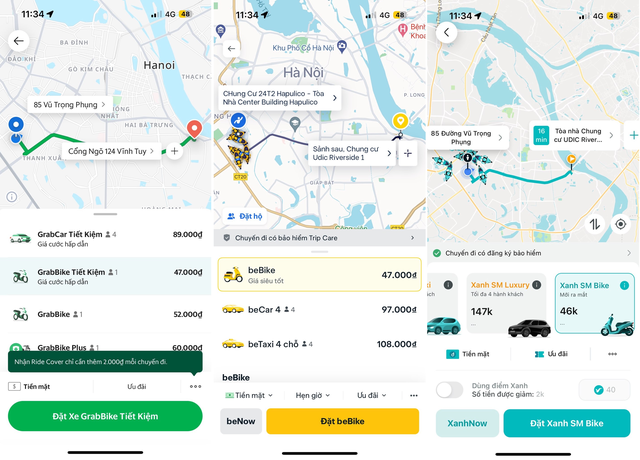
Pricing comparison of motorcycle-hailing services between GSM and competitors
Overall, the emergence of GSM has brought great benefits to VinFast and Vingroup. Currently, GSM is the largest partner of VinFast, accounting for three-quarters of its production.
Mr. Nguyen Van Thanh, CEO of Xanh SM, has also shared that his company has often faced rumors. Regarding doubts about the target of merely becoming a platform to consume cars from VinFast, he questioned, “Look at the world, what are they doing?” CEO Nguyen Van Thanh emphasized.
As evidence of GSM CEO’s argument, the collaboration or investment of car manufacturers in ride-hailing startups is very common, such as India’s Ola. What is more important is the prospects for the ride-hailing segment.
“At the moment, surviving startups in this segment are worth billions of dollars. Uber is nearly USD 130 billion, Grab is worth USD 13 billion, Kakao Mobility pre-IPO is valued at USD 6 billion. Ola is worth over USD 8 billion. That is the answer to the question of whether the segment has potential or not. Because of its potential, it is worth doing, not just for consuming cars from VinFast,” Mr. Nguyen Van Thanh said.
From Mr. Nguyen Van Thanh’s affirmation, we can see the seriousness of Pham Nhat Vuong and GSM, which is not just a tool to consume cars but also a declaration of war against their competitors.
















